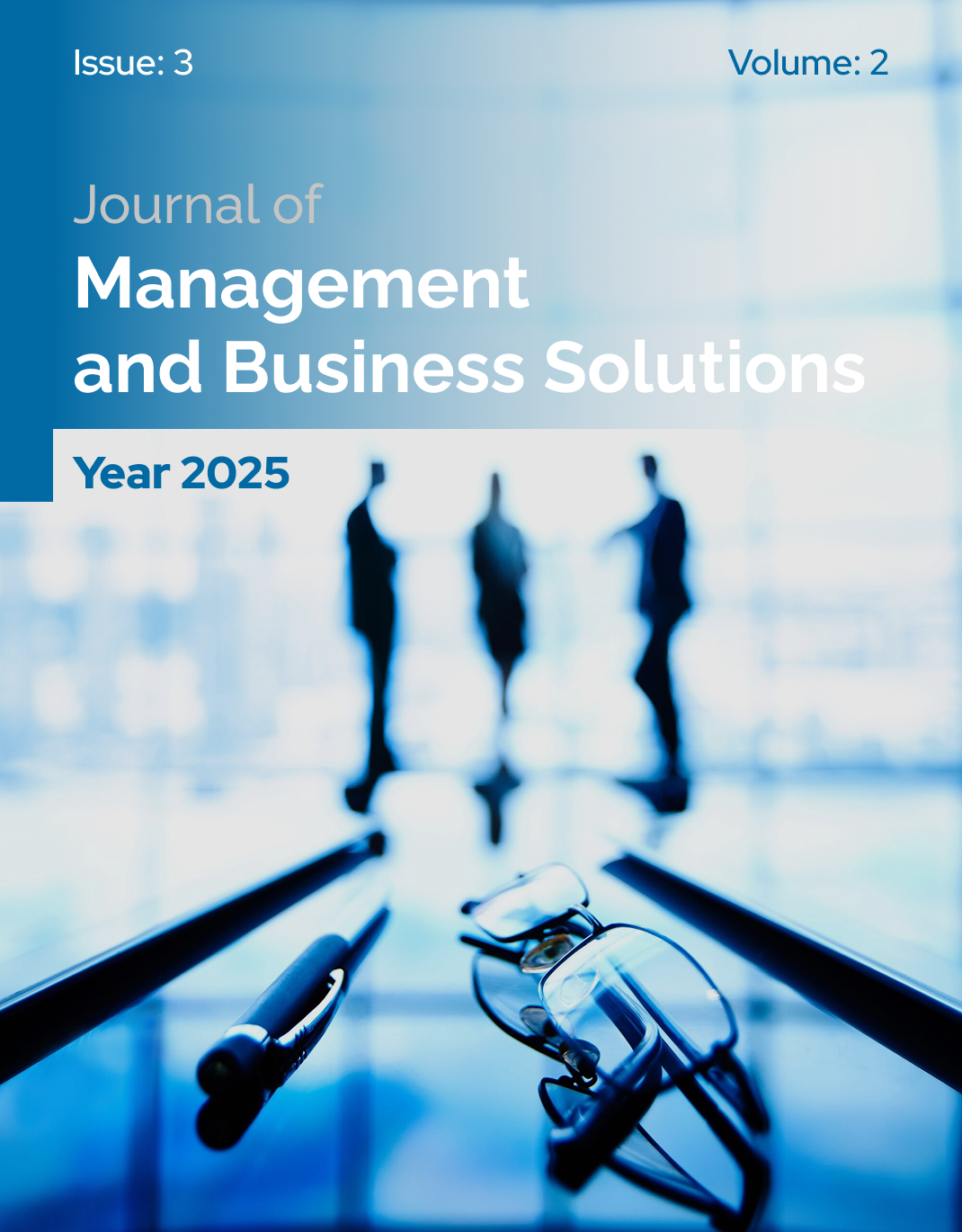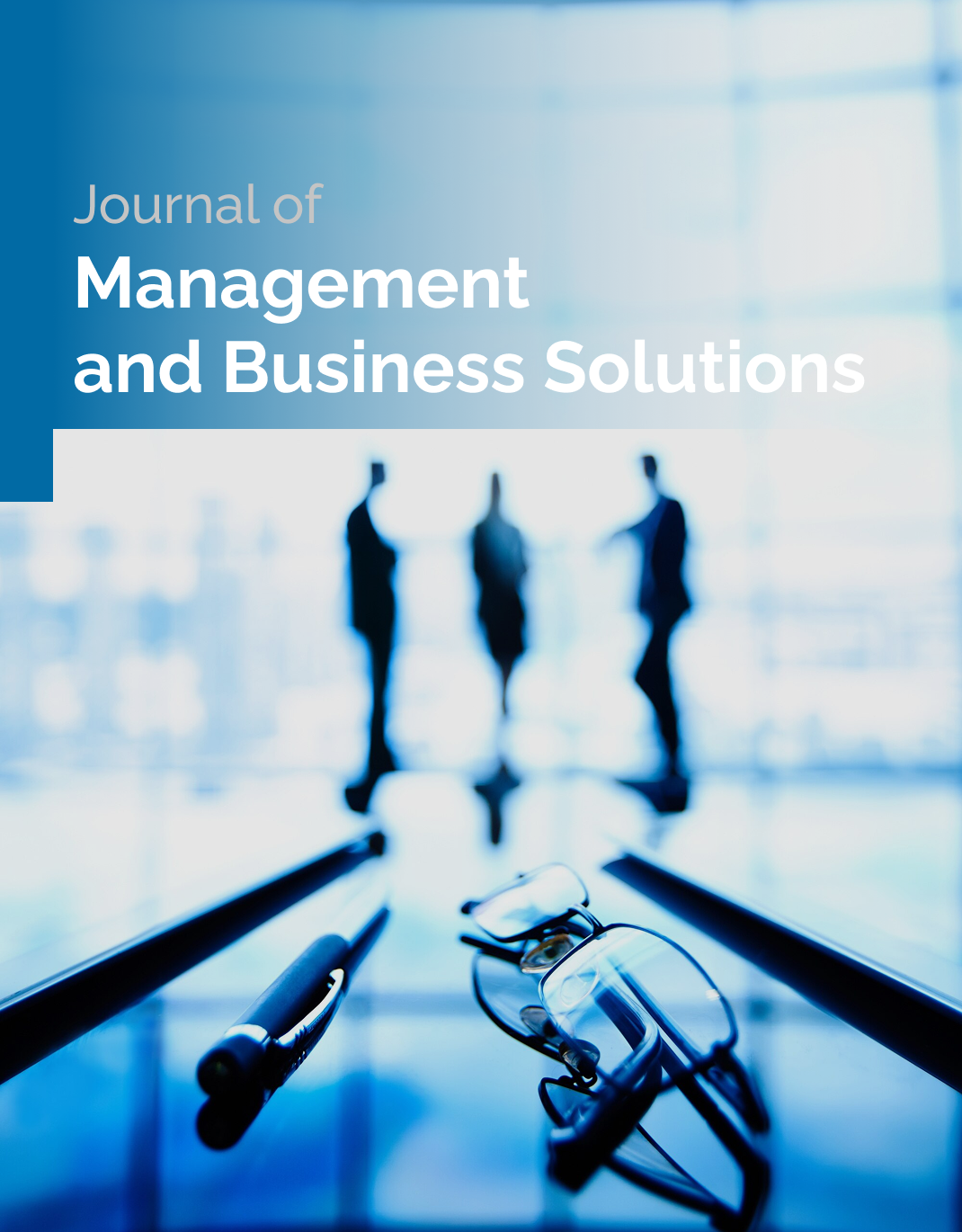Threshold Effects of Banking Risk Management on the Cost of Capital in Banks Listed on the Tehran Stock Exchange with an Emphasis on the Competitiveness Index
The present study examines the threshold effects of external debt on sustainable economic growth while taking into account the heterogeneity in regulatory quality and government institutional quality. Using a Panel Smooth Transition Regression (PSTR) model in which external debt is considered the transition variable, the sustainable development function is modeled. Following confirmation of the nonlinear model, the results of the nonlinear section are analyzed. According to the estimated nonlinear model, the coefficient of external debt (ED) is 0.49, indicating a negative effect of external debt on sustainable development in the selected countries. Given the corresponding probability value of this coefficient (0.0069), which is less than 0.05, this effect is statistically significant at the 95% confidence level. Furthermore, the coefficients and computed probability values for institutional quality, regulatory quality, and rule of law are 0.016, 0.089, and 0.235, with corresponding probability values of 0.0355, 0.0015, and 0.0053, respectively. These results indicate that the effects of regulatory quality, institutional quality, and the rule of law on improving sustainable development are positive and statistically significant.
Design and Fit of Auditors’ Psychological Model and the Disclosure Quality of the Board of Directors’ Activity Report
This study examines the design and fit of a psychological model of auditors and the disclosure quality of the Board of Directors’ activity report. The present research is applied in terms of purpose and descriptive-analytical in terms of nature, and it is conducted within the category of survey studies. First, the factors influencing the psychological model of auditors and the disclosure quality of the Board of Directors’ activity report were identified using the grounded theory method. Subsequently, the model was designed through the interpretive structural modeling (ISM) approach, and finally, the model was estimated using structural equation modeling (SEM). The data collection procedures in this research include both library and field methods. For reviewing the literature and research background, library methods were used, while field methods were employed to collect data aimed at confirming or rejecting the study hypotheses. Observation and a structured questionnaire served as the primary data-gathering tools. The statistical population of this research comprises partners, employees, managers, and supervisors of auditing firms. The first step in determining the sample size involved defining an expert according to specific criteria. In this study, the perspectives of 20 experts, audit firm managers, and university faculty members were utilized. In the quantitative section, the opinions of partners, employees, managers, and supervisors of auditing firms were employed to evaluate the model fit and validate it using the partial least squares (PLS) method. Ultimately, 317 questionnaires were selected and analyzed in the quantitative phase. The findings indicated that the measurement instruments demonstrated acceptable levels of validity and reliability. Moreover, convergent validity was confirmed through the evaluation of factor loadings, showing adequate differentiation among latent variables and the absence of overlap. Further, the structural model was analyzed using the Bootstrap method to determine the significance of relationships among latent variables and to verify the accuracy of the research hypotheses. The results showed that all model relationships were significant with appropriate strength, indicating the proposed model’s strong predictive and explanatory power. Additionally, the Variance Inflation Factor (VIF) was calculated for mediating and independent variables, confirming the absence of multicollinearity and ensuring the accuracy of parameter estimations. Overall, the findings revealed that the partial least squares (PLS) analysis technique is not only a powerful tool for evaluating multivariate structural models but also highly capable of analyzing complex and real-world data.
The Spillover Effect of Global Crude Oil Price Volatility on Iran’s Basic Metals Market: A Kalman Filter Approach
The present study examines the spillover effect of global crude oil price volatility on the basic metals market in Iran during the period from 1996 to 2024. Given the importance of oil and basic metals in Iran’s economy—and their roles in export revenues and economic growth—the main objective of the research is to identify the transmission channels through which oil price volatility affects the export of mineral resources and basic metals, and to determine the magnitude and direction of these effects. To analyze the data, a state–space model using the Kalman Filter algorithm is employed, which enables the estimation of unobservable variables and time-varying parameters of the model. This method is particularly suitable for examining structural instability and the dynamic effects of market volatility. The findings indicate that crude oil price volatility, economic policy uncertainty, geopolitical risk, and energy consumption exert negative effects on basic metals exports, leading to reduced competitiveness and profitability in this sector. In contrast, capital and labor have positive effects on the export of basic metals, facilitating the enhancement of production and export performance. Furthermore, the effects of institutional quality and the economic complexity index in Iran appear to be limited and short-term. Based on the results, it is recommended that policymakers stabilize energy prices, reduce policy uncertainty, expand stable trade relations, invest in technology, and increase institutional transparency to support the sustainability and growth of basic metals exports. Using the recursive Kalman Filter algorithm, this study provides an accurate and dynamic portrayal of the interaction between global oil market volatility and the basic metals sector, offering valuable insights for policymakers and economic practitioners.
The Threshold Effects of External Debt on Sustainable Economic Growth Considering Heterogeneity in Regulatory Quality and Government Institutional Quality
The present study examines the threshold effects of external debt on sustainable economic growth while taking into account the heterogeneity in regulatory quality and government institutional quality. Using a Panel Smooth Transition Regression (PSTR) model in which external debt is considered the transition variable, the sustainable development function is modeled. Following confirmation of the nonlinear model, the results of the nonlinear section are analyzed. According to the estimated nonlinear model, the coefficient of external debt (ED) is 0.49, indicating a negative effect of external debt on sustainable development in the selected countries. Given the corresponding probability value of this coefficient (0.0069), which is less than 0.05, this effect is statistically significant at the 95% confidence level. Furthermore, the coefficients and computed probability values for institutional quality, regulatory quality, and rule of law are 0.016, 0.089, and 0.235, with corresponding probability values of 0.0355, 0.0015, and 0.0053, respectively. These results indicate that the effects of regulatory quality, institutional quality, and the rule of law on improving sustainable development are positive and statistically significant.
Middle Managers as Change Agents: A Grounded Theory Approach
The objective of this study was to explore how middle managers in Brazilian organizations enact their roles as change agents, highlighting the strategies they use, the challenges they face, and the identity negotiations they undertake during organizational transformation. A qualitative grounded theory methodology was employed to generate an empirically grounded conceptual understanding of middle managers’ roles in change processes. Data were collected through semi-structured interviews with 18 middle managers from diverse industries in Brazil, selected purposively to ensure variation in perspectives. Interviews were conducted until theoretical saturation was reached, transcribed verbatim, and analyzed using NVivo 14 software. Analysis followed the grounded theory procedures of open, axial, and selective coding, with constant comparison and memo writing applied throughout the process to ensure analytical rigor and depth. Three overarching categories emerged from the analysis. First, navigating organizational change highlighted challenges such as adapting to structural shifts, communication ambiguities, balancing dual expectations, resource constraints, and informal learning. Second, middle managers as change enablers revealed proactive strategies including building trust, motivating employees, facilitating collaboration, coaching and mentoring, translating strategies into practice, and acting as role models. Third, personal and professional identity in change captured both growth opportunities and strains, encompassing professional development, emotional burden, identity negotiation, resilience-building, and ethical dilemmas. Participant narratives underscored middle managers’ dual role as both implementers and interpreters of change, mediating between organizational demands and human concerns. The study demonstrates that middle managers are central actors in organizational change, operating simultaneously as translators, enablers, and identity negotiators. By illuminating their experiences within the Brazilian context, the findings contribute to a deeper understanding of the relational, structural, and personal dimensions of change leadership. Practical implications highlight the need for organizational support structures that empower and sustain middle managers in fulfilling their critical change-agent roles.
How Do Leaders Build Psychological Safety? Insights from Semi-Structured Interviews
The objective of this study was to explore how leaders build psychological safety within their teams, with a focus on identifying specific leadership practices and strategies that foster trust, openness, and inclusion in organizational contexts. This qualitative study employed a phenomenological design to capture leaders’ lived experiences of fostering psychological safety. Twenty-six leaders from diverse sectors in Kenya—including education, healthcare, financial services, technology, and non-governmental organizations—were selected through purposive sampling. Data were collected using semi-structured interviews, which lasted between 45 and 75 minutes. Recruitment continued until theoretical saturation was achieved. All interviews were audio-recorded, transcribed verbatim, and analyzed thematically with the support of NVivo 14 software. The analysis followed an inductive process of coding, categorization, and theme development to identify recurring patterns and practices. Three overarching themes emerged from the data. First, trust and interpersonal respect were found to be foundational, with leaders highlighting transparency, integrity, respectful communication, and confidentiality as essential for building safety. Second, supportive leadership practices—including encouraging voice, constructive feedback, empathetic support, reframing mistakes as learning opportunities, empowering autonomy, and recognizing contributions—were consistently emphasized. Third, creating open and safe team climates was identified as critical, achieved through open communication channels, inclusive norms, constructive conflict management, collective identity-building, reducing fear of negative consequences, and shared leadership responsibility. Across themes, leaders stressed that psychological safety is an ongoing relational process requiring consistent reinforcement. The findings demonstrate that psychological safety is cultivated through a combination of relational integrity, supportive practices, and intentional climate-building efforts by leaders. This study contributes to the literature by extending psychological safety research into the Kenyan context and offering practical strategies for leaders to foster safety, inclusion, and innovation within their teams.
Women in Leadership: Lived Experiences of Gendered Challenges in Corporate Management
The purpose of this study was to explore the lived experiences of women in corporate leadership in Armenia, with a focus on identifying gendered challenges and examining the coping strategies employed to navigate these barriers. A qualitative phenomenological design was employed to capture the subjective meanings and professional realities of women leaders. Seventeen participants holding senior or mid-level management positions in corporate organizations across Armenia were recruited through purposive sampling. Data were collected via in-depth semi-structured interviews, each lasting 60–90 minutes, until theoretical saturation was reached. All interviews were audio-recorded, transcribed verbatim, and analyzed using inductive thematic analysis with the assistance of NVivo 14 software. Credibility was ensured through reflexivity, peer debriefing, and maintenance of an audit trail. Three overarching themes emerged from the analysis. First, structural and organizational barriers included the glass ceiling, biased evaluations, pay disparities, and male-dominated cultures that excluded women from decision-making networks. Second, interpersonal and social challenges reflected gender stereotyping, discrimination, microaggressions, and the influence of cultural norms that reinforced traditional gender roles. Third, coping strategies and resilience demonstrated how women leaders responded through building professional networks, developing authentic leadership identities, strategic career management, advocacy, and leveraging digital platforms. Illustrative quotations highlighted both the persistence of systemic barriers and women’s resourceful navigation of these challenges. The findings underscore that women leaders in Armenia’s corporate sector continue to face entrenched gender inequalities at structural, interpersonal, and cultural levels. However, their strategies of resilience and adaptation reveal significant agency and potential for transformative change. These insights call for organizational reforms, mentorship structures, and inclusive policies to dismantle systemic barriers and foster equitable leadership pathways.
Understanding Servant Leadership in Multicultural Teams: A Phenomenological Inquiry
This study aimed to explore the lived experiences of servant leadership in multicultural teams, focusing on how servant leadership practices are enacted and perceived within culturally diverse organizational contexts in China. A qualitative research design grounded in phenomenology was employed to capture participants’ lived experiences. Twenty-two participants with at least two years of experience in multicultural teams were recruited through purposive sampling. Semi-structured interviews were conducted in both English and Mandarin, lasting between 45 and 70 minutes, and continued until theoretical saturation was reached. All interviews were audio-recorded, transcribed verbatim, and where necessary, translated into English. Data were analyzed using NVivo 14, following systematic stages of coding and thematic analysis to extract categories and subcategories that captured the essence of servant leadership in multicultural settings. Analysis revealed four overarching themes: (1) empowering team members, encompassing autonomy, skill development, recognition, trust, innovation, and confidence building; (2) cross-cultural sensitivity, characterized by respect for diversity, language accommodation, adaptive leadership, equity, and cultural curiosity; (3) ethical and humble leadership, reflected in transparency, leading by example, humility, prioritization of collective good, and admitting mistakes; and (4) nurturing team relationships, expressed through active listening, emotional support, trust-building, collaboration, conflict resolution, and encouraging feedback. These findings collectively suggest that servant leadership fosters inclusivity, psychological safety, and innovation in multicultural team contexts. The study concludes that servant leadership is a highly effective approach for managing multicultural teams, as it combines empowerment, cultural sensitivity, ethical humility, and relational care to foster trust, unity, and performance. The findings extend servant leadership theory into multicultural settings, demonstrating its adaptability and relevance in diverse global workplaces.
About the Journal
The Journal of Management and Business Solutions (JMBS) is a peer-reviewed, open access academic journal committed to the advancement and dissemination of knowledge in the fields of management, business, and organizational studies. Published on a quarterly basis, JMBS serves as a multidisciplinary platform for academic researchers, industry professionals, policy-makers, and graduate students to explore current trends, theoretical insights, empirical findings, and innovative methodologies in the dynamic world of business and management.
With a strong emphasis on scholarly rigor and relevance to practice, JMBS aims to bridge the gap between theory and implementation, offering cutting-edge research that addresses complex challenges in areas such as strategic management, leadership, entrepreneurship, innovation, corporate governance, digital transformation, financial management, human resource development, marketing, operations, and organizational behavior.
The journal maintains a double-blind peer review process to ensure the integrity, quality, and objectivity of published content. Each submitted manuscript is evaluated by two or three anonymous reviewers with relevant subject matter expertise, supported by a diverse editorial board of seasoned scholars and industry experts.
JMBS welcomes contributions from global scholars and encourages submissions that reflect a variety of perspectives, cultures, and methodological approaches. The journal is committed to publishing original articles, theoretical papers, empirical studies, review articles, and case analyses that contribute to the theoretical foundations, practical applications, and policy implications in the fields of business and management.
Current Issue

Articles
-
Exploring the Dimensions of Employee Engagement in Remote Work Settings: A Qualitative Investigation of Technology Firms
Mitra Dadvar ; Hossein Tabandeh * -
Uncovering the Dimensions of Organizational Agility in Crisis Contexts: A Grounded Theory Study of Logistics Firms
Samaneh Kheirandish ; Behnam Rostami * -
Identifying the Causes of Knowledge Hoarding in Professional Service Firms: A Phenomenological Approach
Zohreh Malekzadeh ; Ali Khosravani * -
Exploring Strategic Human Resource Practices That Promote Psychological Safety in Diverse Workforces
Hanieh Bahmani ; Mohammad Reza Dehghani * ; Yasaman Eskandari















